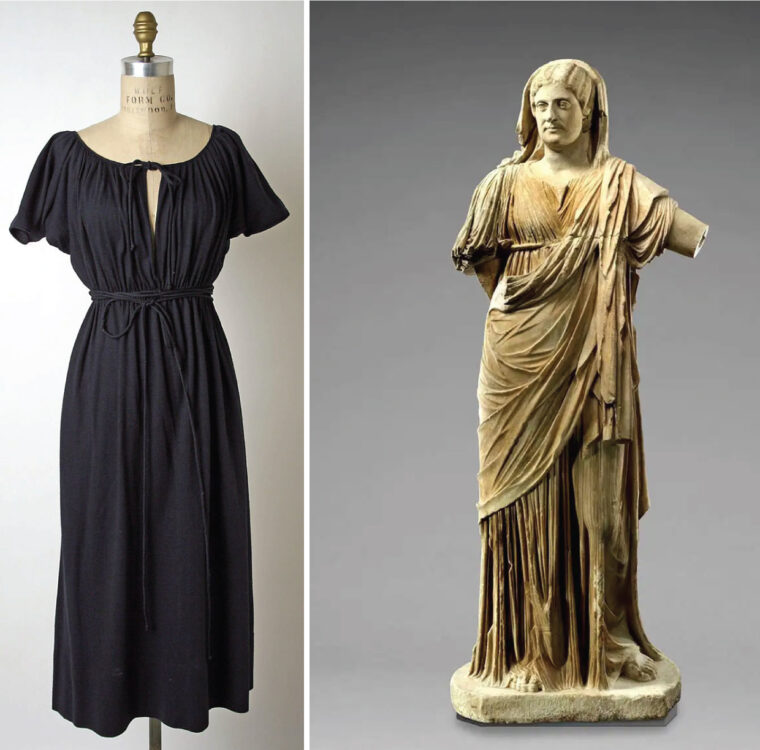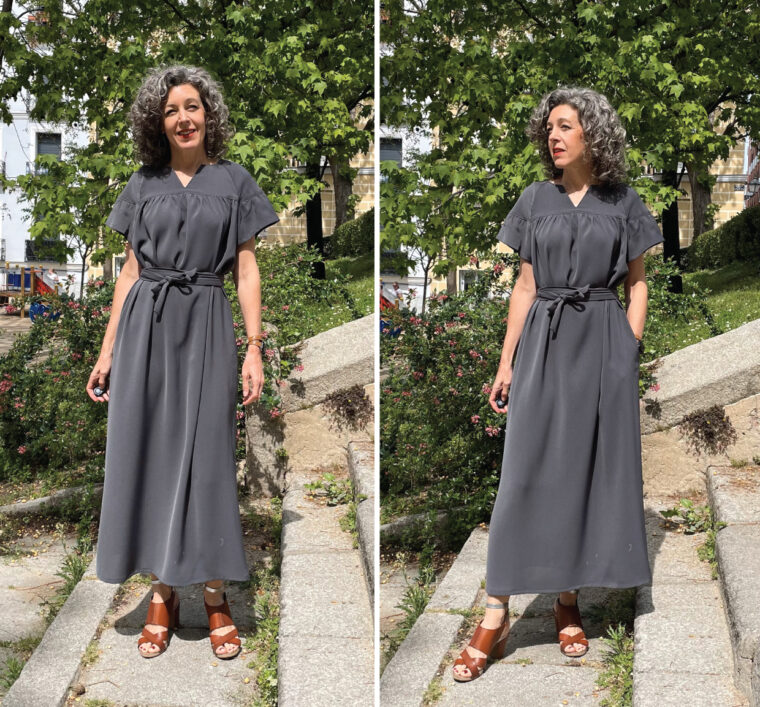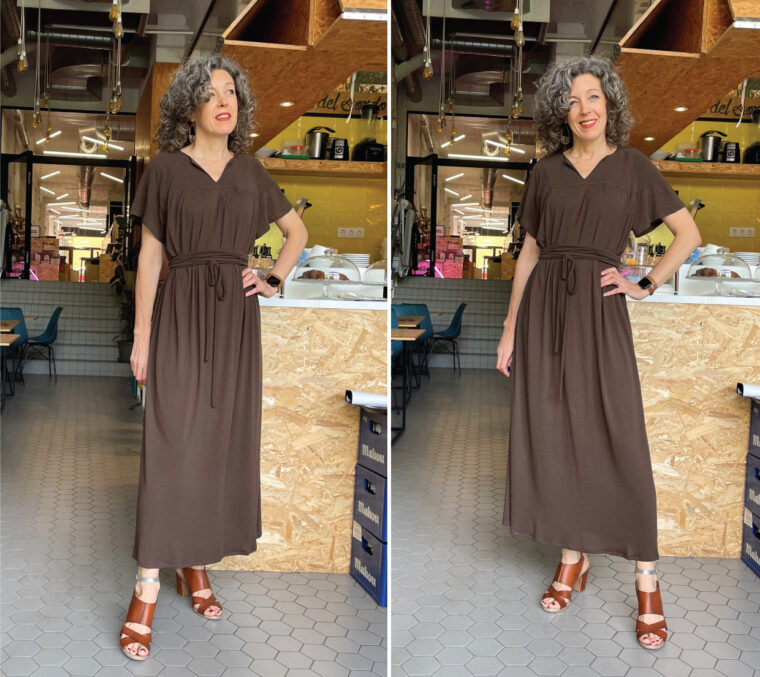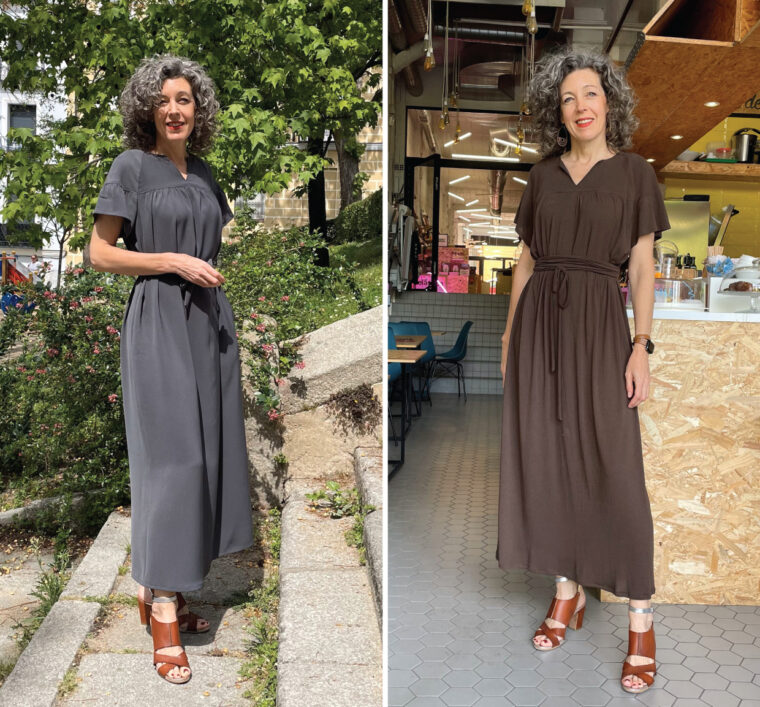When I first laid eyes on Claire McCardell's iconic dress, it sparked an idea for the Positano Blouse + Dress pattern I was designing. I’ve always been drawn to the timeless simplicity of her work and the graceful draping that echoes the elegance of Roman sculptures. This particular dress is part of the Metropolitan Museum of Art’s collection, and their description captures its essence beautifully:
“McCardell’s classic day-to-evening dress combines the unassuming charm of a peasant blouse with the sophisticated Empire silhouette. By cinching the waist and neck with delicate spaghetti straps, she achieves a look that is both casual and chic. Is she Esmeralda or Madame Récamier? In truth, she embodies both the everyday and the extraordinary. If the dress evokes the flowing lines of ancient Roman sculpture, it also highlights the versatility of ready-to-wear fashion, adapting seamlessly to various body types.â€

If you're unfamiliar with Claire McCardell, let’s save that story for another day. She was a pioneer of American sportswear and a true visionary. Today, I want to share how her design inspired the Positano Blouse + Dress and how playing around with different fabrics helped me recreate that style.
Developing patterns requires a lot of thought—from choosing construction techniques to writing clear instructions and creating detailed illustrations. While I enjoy this process, I also love experimenting with my designs during development. Recently, while browsing my local fabric store, I stumbled upon two unusual fabrics that immediately reminded me of McCardell’s piece. Both fabrics had a lovely drape, but the colors were quite neutral—almost understated.
I decided to experiment by using these fabrics for versions of the Positano Dress, extending the length to suit my personal preference. Here’s what I came up with:
The first fabric is a heavier woven synthetic material, which feels rich yet subtle. It’s hard to pinpoint exactly what makes it special, but its texture is intriguing—almost like a double weave. The second fabric is a lightweight cotton jersey, simple yet soft and airy. Below are the results:


The jersey version drapes beautifully, hugging the body gently but gracefully, while the longer hem ensures a polished silhouette. The gray woven fabric, on the other hand, holds its shape better, giving the dress a slightly structured feel. Both styles would make excellent travel dresses—the gray fabric resists wrinkles effortlessly, and the brown jersey simply shakes them off.
Since many of you frequently ask about alternative fabric choices, I wanted to showcase how different materials can transform the same design. Which one do you prefer?

Stay tuned because I’ll be sharing another Positano Blouse and a Laureles Dress soon!
---
Let me know if you'd like me to expand further or tweak anything specific.
Biodegradable Filling,Small Particle Filler Cotton,Particle Filler Cotton,Eco-Friendly Pearl Filled Cotton
USHARE INDUSTRIAL (DONGGUAN)CO.,LTD , https://www.usharedg.com
![<?echo $_SERVER['SERVER_NAME'];?>](/template/twentyseventeen/skin/images/header.jpg)